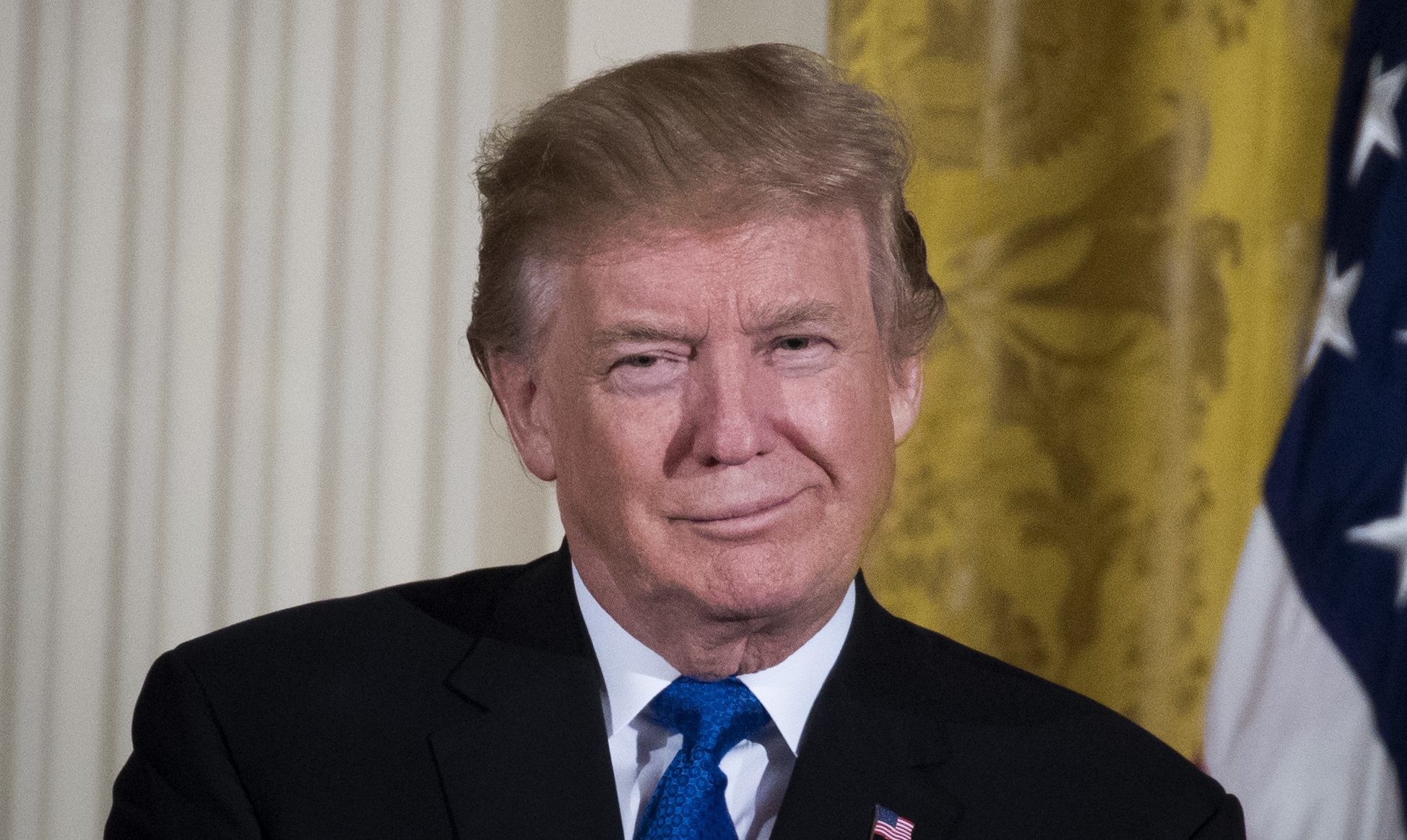
THE thought of Donald Trump having a button that could launch nuclear weapons sitting temptingly on his desk is a scary one.
A tweet from the president yesterday made it seem that it was a reality.
Trump wrote to his 45 million plus followers: “North Korean Leader Kim Jong Un just stated that the “Nuclear Button is on his desk at all times.”
“Will someone from his depleted and food starved regime please inform him that I too have a Nuclear Button, but it is a much bigger & more powerful one than his, and my Button works!”
So does he really have a button on his desk that can unleash nuclear war on the world?
An insightful interview by CNN with one of the foremost nuclear protocol experts in the US, Garrett M. Graff, reveals what would happen in the event of the president wanting to launch a strike.
And while it is not as simple as just pressing a button, it is a process designed to be streamlined.
In the event of either a retaliatory or preemptive strike, there would likely be much discussion between the president and his advisers before taking action, depending on the time constraints involved.
The process of launching, however, has been created to be as fast as possible and the only person that can authorise it is the commander-in-chief, a.k.a. the incumbent president.
Firstly, they would review plans kept inside the nuclear “football”, a briefcase that follows the president wherever they go. It’s officially called the ‘president’s emergency satchel’.
Trump’s has been known to follow him on a golf buggy when he’s out for a round, but mostly it is kept in the trust of the military aide that is always in the president’s entourage.
Inside the case are binders full of plans for war and strategies for a nuclear launch.
“There’s a visual guide as part of the Football that one military aide referred to as the “Denny’s Menu” of nuclear war. But other aides have darkly joked there are really just three options: Rare, Medium and Well-Done,” says Graff.
A signal would then be sent to the Joint Chiefs of Staff to initiate the process. The President has final authority on any launch, but in theory military commanders could oppose it if it was illegal under international law. The president could, however, just remove them from their posts and carry on.
Proceeding with the launch, the president would then get out the “biscuit” – not a Custard Cream or Bourbon, but a plastic card with authentication codes that is kept on their person at all times.
This is except for Bill Clinton, who mislaid his for several months during the year 2000, and Ronald Reagan, who was briefly separated from it when he was rushed into hospital after an assassination attempt in 1981.
To initiate a nuclear strike, the president has to relay the classified codewords to military officials to prove that they are indeed the real president.
The president’s order would then be verified, but never opposed, by the Secretary of Defence as a final sign that it is a legitimate order.
Within minutes of the call being made, missiles would be airborne and heading for their intended target.
So there is no button – the one on Trump’s desk actually summons someone to bring him a Diet Coke – but the process seems remarkably straight forward and unchecked.
Behold: The "Coke button."
H/T: @Graeme_rj @SalenaZito @dcexaminer pic.twitter.com/ivOQFUthXY
— Dave Brown (@dave_brown24) April 28, 2017
It is unknown whether Kim Jong-un has a button on his desk for a nuclear launch, or indeed ordering a soft drink.
Read more
The nuclear football is a lot like a Denny’s menu, CNN
Is President Trump’s Nuclear Button Bigger Than Kim Jong-un’s?, Snopes
Former Commander: Here’s What Happens When the President Orders a Nuclear Strike, Fortune.com
The Real Story of the “Football” That Follows the President Everywhere, The Smithsonian

Enjoy the convenience of having The Sunday Post delivered as a digital ePaper straight to your smartphone, tablet or computer.
Subscribe for only £5.49 a month and enjoy all the benefits of the printed paper as a digital replica.
Subscribe